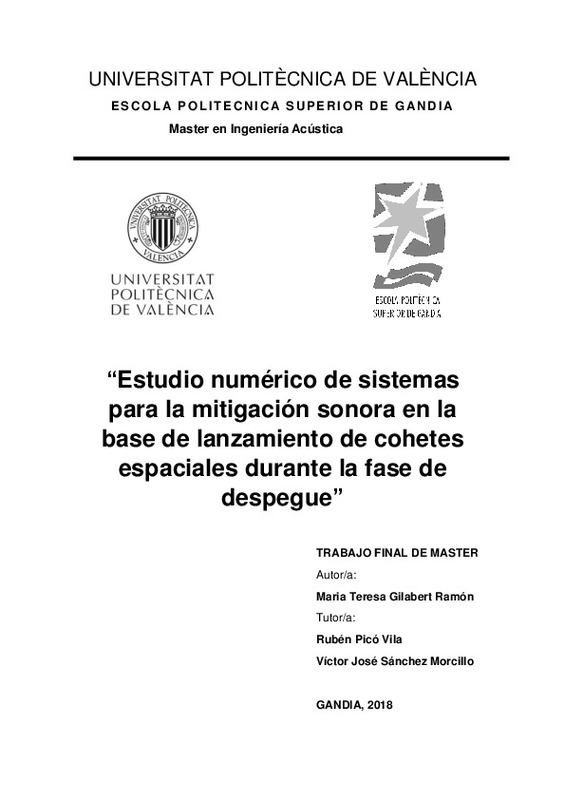JavaScript is disabled for your browser. Some features of this site may not work without it.
Buscar en RiuNet
Listar
Mi cuenta
Estadísticas
Ayuda RiuNet
Admin. UPV
Estudio numérico de sistemas para la mitigación sonora en la base de lanzamiento de cohetes espaciales durante la fase de despegue
Mostrar el registro completo del ítem
Gilabert Ramón, MT. (2018). Estudio numérico de sistemas para la mitigación sonora en la base de lanzamiento de cohetes espaciales durante la fase de despegue. Universitat Politècnica de València. http://hdl.handle.net/10251/111851
Por favor, use este identificador para citar o enlazar este ítem: http://hdl.handle.net/10251/111851
Ficheros en el ítem
Metadatos del ítem
| Título: | Estudio numérico de sistemas para la mitigación sonora en la base de lanzamiento de cohetes espaciales durante la fase de despegue | |||
| Autor: | Gilabert Ramón, María Teresa | |||
| Director(es): | ||||
| Entidad UPV: |
|
|||
| Fecha acto/lectura: |
|
|||
| Resumen: |
Este trabajo fin de máster consiste en la realización de un estudio numérico mediante
elementos finitos sobre sistemas de mitigación sonora del ruido producido por los
cohetes espaciales durante la fase de despegue. Este ...[+]
This master's thesis consists in the realization of a numerical study by finite elements
method on the reduction systems of the noise produced by the space rockets during
the takeoff phase. This work is a part of the ...[+]
|
|||
| Palabras clave: |
|
|||
| Derechos de uso: | Reconocimiento (by) | |||
| Editorial: |
|
|||
| Titulación: |
|
|||
| Tipo: |
|
recommendations
Este ítem aparece en la(s) siguiente(s) colección(ones)
-
EPSG - Trabajos académicos [5004]
Escuela Politécnica Superior de Gandia







